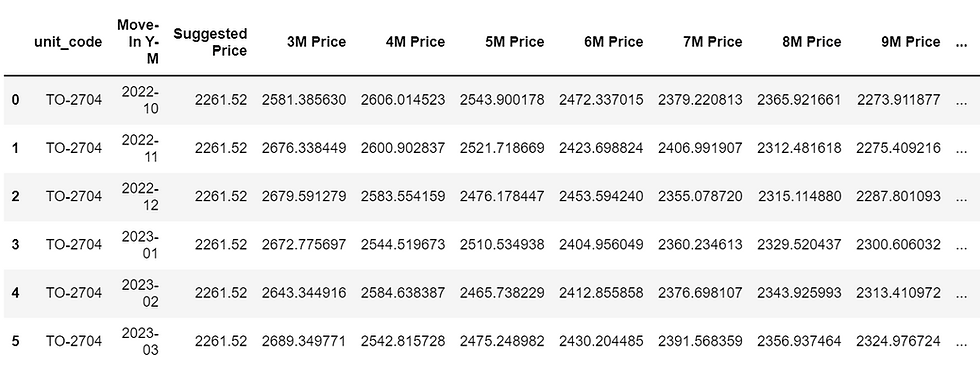Analytics in the Advancement of Modern Healthcare
- christianpetrozza
- Jan 28, 2021
- 4 min read
With vast amounts of doctor notes and medical information that had accumulated in the heath sector, it was evident that a more precise and accessible method for the storage of patient information was needed. However, it wasn’t until the 1970s when healthcare institutions began the early movement of capturing and storing electronic health records. Just recently it is being realized that this treasure trove of data possesses the capabilities to improve the healthcare system not only for patients but for carer givers as well.
The healthcare industry, ranging from hospitals to private practices stores 30% of the worlds global data and is growing at a rate faster than manufacturing, financial services and media. With an estimation of 175 zettabytes of data present globally in 2025, approximately 52.5 zettabytes of data will be allocated to the healthcare sector (1). To put that on a meaningful scale, if you tried to download all the healthcare data in 2025 it would take your computer 540 million years at an average download speed.
In general, the data within the healthcare sector is comprised of clinical data stored in clinical decision support systems, electronic patient records (EPR), machine generated sensor data and many other types. Data incorporated in these fields include physician notes, prescriptions, imaging, laboratory results, insurance, vital sign sensors, medical history and various administrative data. McKinsey has stated that “data analytics is changing the practice of medicine” and the above-mentioned data can be used to reduce waste and increase efficiency in a variety of areas within healthcare (2). The foremost being clinical operations, research and development, and the most important for this article - public health.
How are data scientists wrangling, visualizing and interpreting this chaotic data reserve in order to provide actionable insights for professionals and organizations across the healthcare industry?
Clinical Operations: Clinical operations refer to designing, planning and running phase I -IV of clinical trials. This branch of operations introduces many new usable pharmaceuticals every year. Patient information can be used in order to conduct comparative effectiveness modelling to determine inclusion/exclusion of suitable candidates. The goal being to generate more clinically efficient and cost-effective ways to select, diagnose and treat patients.
Research & Development: Before the actions involved in clinical operations, first a potential pharmaceutical candidate must be synthesized. Not surprisingly data analytics provides opportunity for cost savings and maximized process flow. Analytics provides the opportunity to link population data, clinical trial results and genome sequencing to generate more tailored and responsive pharmaceuticals with high FDA approval rates. Thus, reducing cost and improving efficiency of the drug discovery pipeline.
Public Health: It is important to note that both clinical operations and research & development possess much more in-depth and vast opportunities when incorporating big data. This short article focuses on public health and how organizations and private professionals can look towards data analytics to better improve patient care all while reducing expenditures. The sheer size of the public health sector, like others, provides great opportunity for potential uses of data analytics. To state some, analytics can aid traditional practices in public health with:
1) Analyzing prevalence in disease and the characteristic patterns associated with higher/ lower rates. By doing so professionals can better improve public health surveillance, testing and responsiveness based on public and patient data.
2) User data similarities in comparison to public records to determine probability of success and rehabilitation based on various drug generics or medical procedures.
3) Most importantly, or most easily attainable is evaluating portions of public health data (records, patients count, churn rates, staff mobility, etc.) to identify needs, provide better services and manage potential irregularities in a variety of operations.
Data analytics holds the power to improve and alter the efficiency of the healthcare systems for the better. It has changed the way businesses, organizations and countries run and now it is at the frontier of changing the field of medicine as we know it. As an example, visualize Amazon, as a company they were able to javelin to the top of by utilizing data analytics to personalize shopping advertisement and targeting. Why can’t this same approach be used to personalize surgeries, drug plans, patient care and facility operations? The answers to this question is that they can and we are at the precipice of it become a norm.
Although these are very influential possibilities, they require a vast amount of effort, knowledge and data wrangling to achieve. So how can individual care providers use analytics to improve operations today? Branch specific analytics can be used to improve protocols around dealing with patients as well as minimize effects that result in readmission though relationships between patient data. It can be used to optimize staffing in all units of operations by forecasting room occupancies, testing, and emergency demands. All of these will and can result in cost savings for organizations and streamlines patient care.
Research and efforts have accelerated over the past decade on the uses and capabilities of data analytics in health services. Data scientists, health professionals, and Business professionals all have acknowledged the impact that big data can have on how healthcare is run in our society. The next steps are for data scientists and healthcare professionals to work together to formulate effective ways to predict, treat and optimize patient care and operations. Of course, like any other personalized data library, it is important and required to approach possible solutions with ethics as a top priority.












Comments